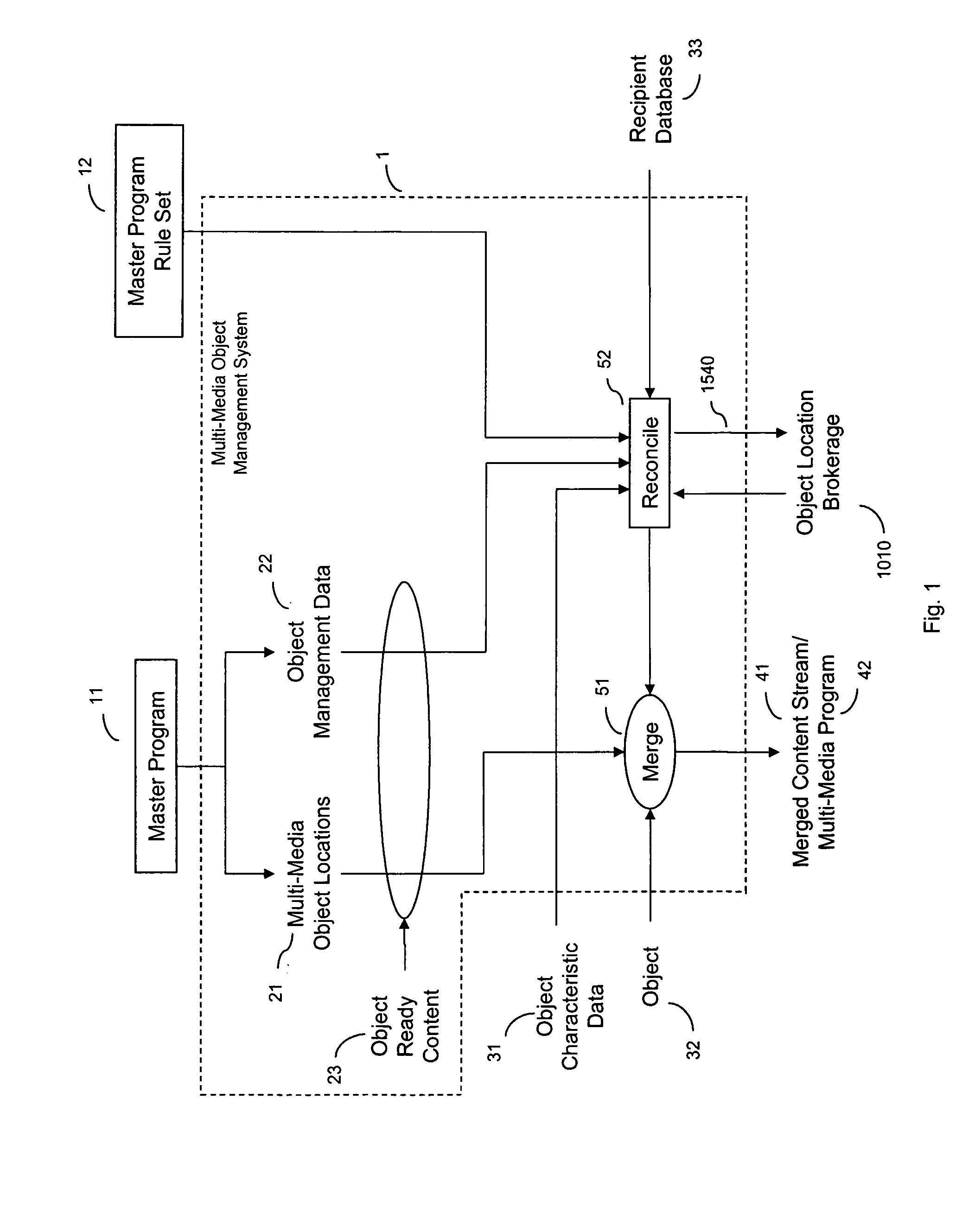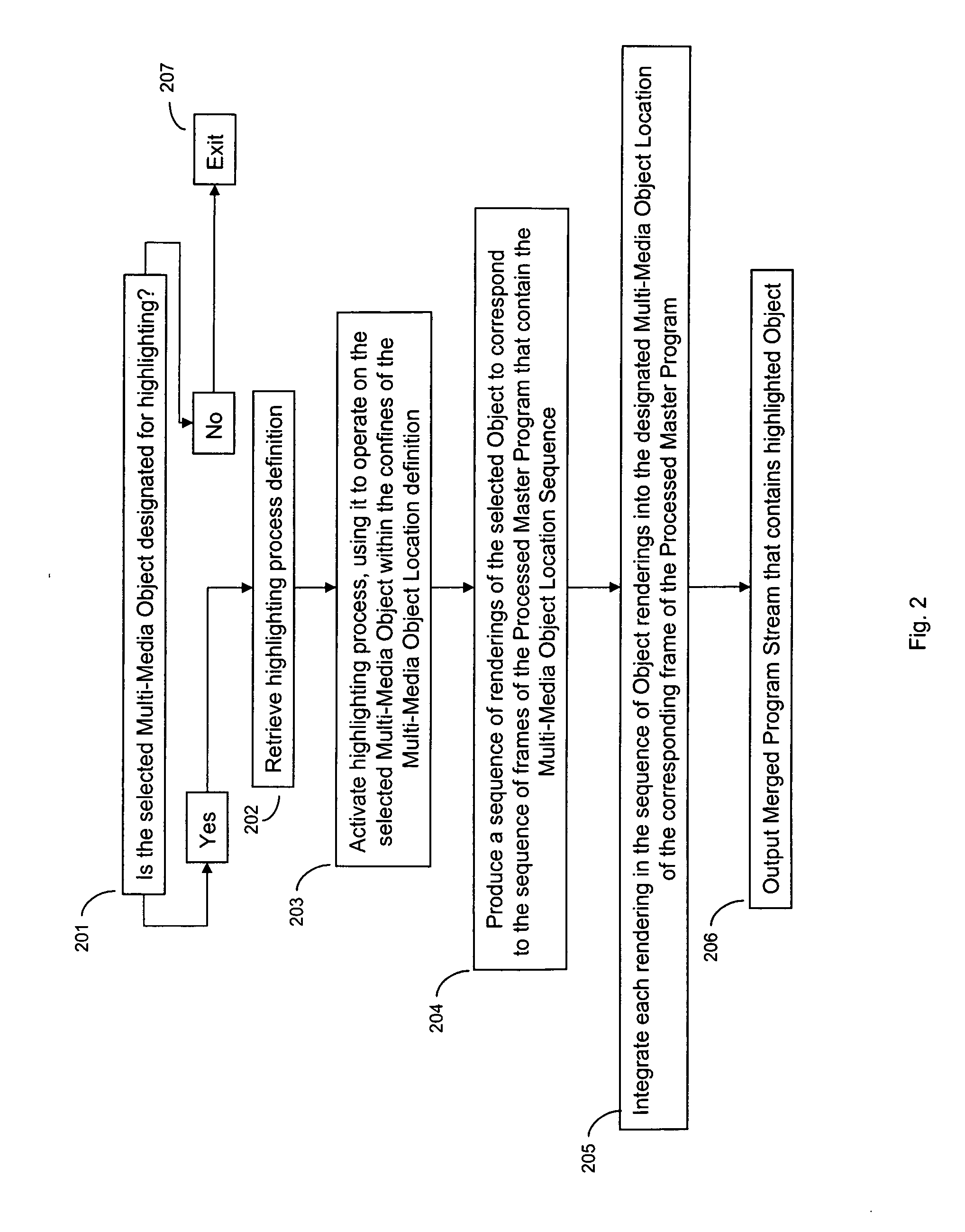System for highlighting a dynamic personalized object placed in a multi-media program
a multimedia program and object technology, applied in the field of multimedia programs, can solve the problems of low efficiency of mass media advertising, low level of purchase decision of advertising dollars, and e-readers for books or magazines that are presently not personalized, and achieve the effect of raising the consumer's propensity to buy
- Summary
- Abstract
- Description
- Claims
- Application Information
AI Technical Summary
Benefits of technology
Problems solved by technology
Method used
Image
Examples
Embodiment Construction
[0031]Traditionally, product placement is a form of advertising that is done in the creation of the original Multi-Media Program to present “advertising” to the recipient without interrupting the program for a formal, traditional commercial. The prominent placement of a product as part of the Multi-Media Program functions to generate brand recognition with the program recipients in a manner that is far more subtle and unobtrusive than traditional commercials.
[0032]The multi-media object management system controls the retrieval of Object data that comprises an Object Representation and Object Characteristics and the integration of this Object data into a corresponding selected one of the predetermined Multi-Media Object Locations which are components of the Multi-Media Program. This enables advertisers to precisely control product placement on a customized basis thereby to dynamically modify the content of the Multi-Media Program on a centralized basis, a regional basis, and / or as it...
PUM
 Login to View More
Login to View More Abstract
Description
Claims
Application Information
 Login to View More
Login to View More - R&D
- Intellectual Property
- Life Sciences
- Materials
- Tech Scout
- Unparalleled Data Quality
- Higher Quality Content
- 60% Fewer Hallucinations
Browse by: Latest US Patents, China's latest patents, Technical Efficacy Thesaurus, Application Domain, Technology Topic, Popular Technical Reports.
© 2025 PatSnap. All rights reserved.Legal|Privacy policy|Modern Slavery Act Transparency Statement|Sitemap|About US| Contact US: help@patsnap.com



